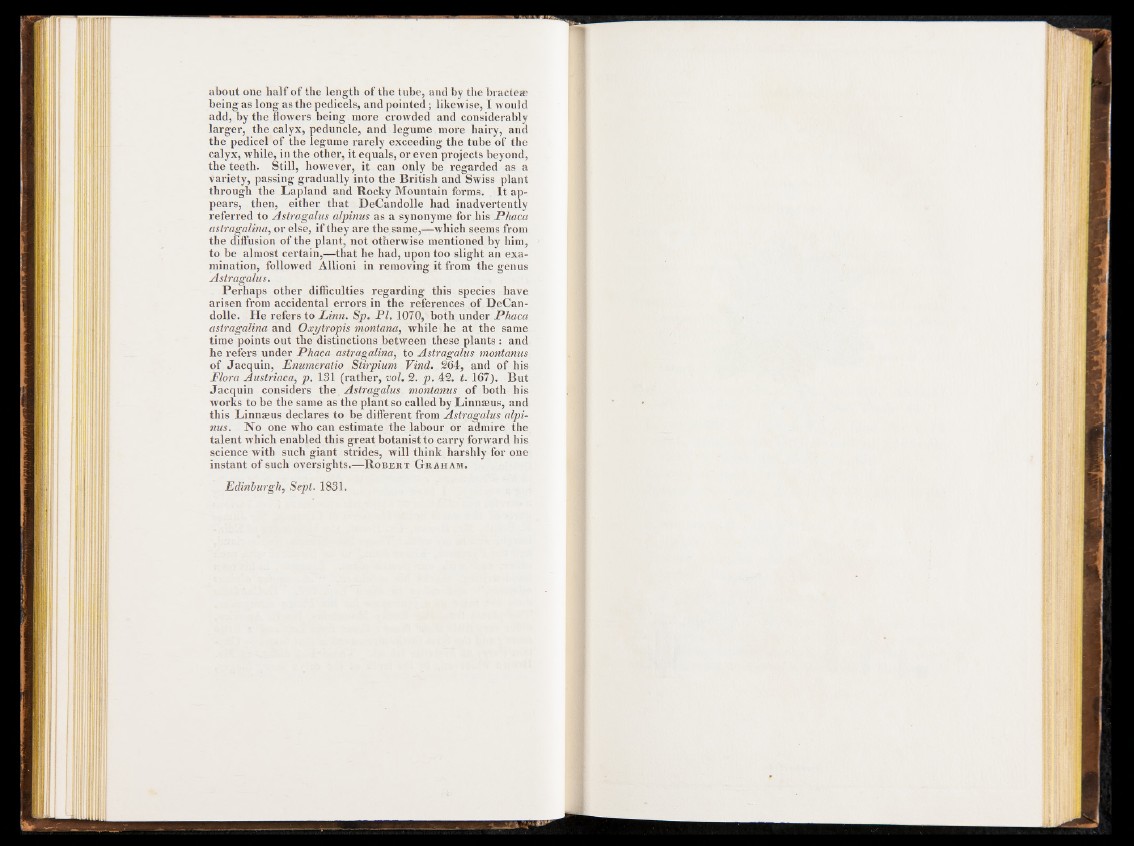
about one half of the length of the tube, and by the bracteae
being as long as the pedicels, and pointed ; likewise, I would
add, by the flowers being more crowded and considerably
larger, the calyx, peduncle, and legume more hairy, and
the pedicel of the legume rarely exceeding the tube of the
calyx, while, in the other, it equals, or even projects beyond,
the teeth. Still, however, it can only be regarded as a
variety, passing gradually into the British and Swiss plant
through the Lapland and Rocky Mountain forms. It appears,
then, either that DeCandolle had inadvertently
referred to Astragalus alpinus as a synonyme for his JPhaca
astragalina, or else, if they are the sa me,—which seems from
the diffusion of the plant, not otherwise mentioned by him,
to be almost certain,—that he had, upon too slight an examination,
followed Allioni in removing it from the genus
Astragalus.
Perhaps other difficulties regarding this species have
arisen from accidental errors in the references of DeCandolle.
He refers to Linn. Sp. PI. 1070, both under Phaca
astragalina and Oxytropis montana, while he at the same
time points out the distinctions between these plants : and
he refers under Phaca astragalina, to Astragalus montanus
of Jacquin, Enumeratio Stirpium Vind. 264, and of his
Flora Austriaca, p. 131 (rather, vol. 2. p. 42. t. 167). But
Jacquin considers the Astragalus montanus of both his
works to be the same as the plant so called by Linnaeus, and
this Linnaeus declares to be different from Astragalus alpinus.
No one who can estimate the labour or admire the
talent which enabled this great botanist to carry forward his
science with such giant strides, will think harshly for one
instant of such oversights.—R obert G raham.
Edinburgh, Sept. 1831.